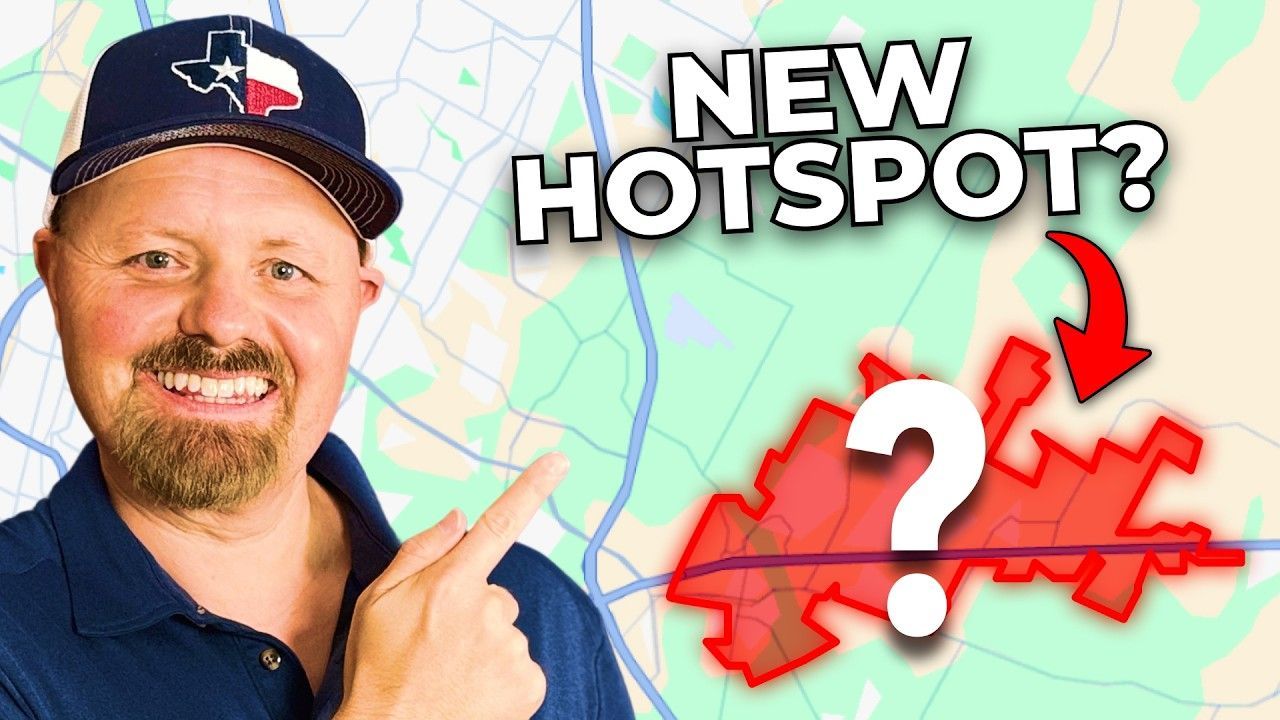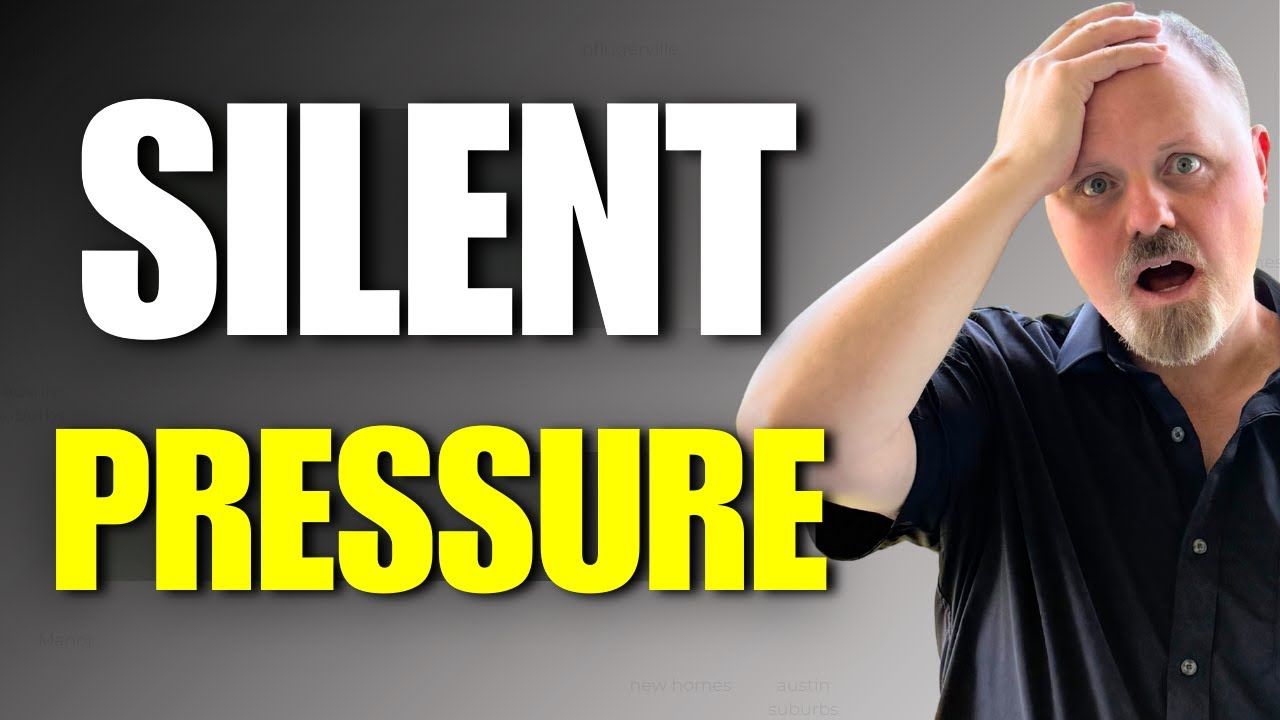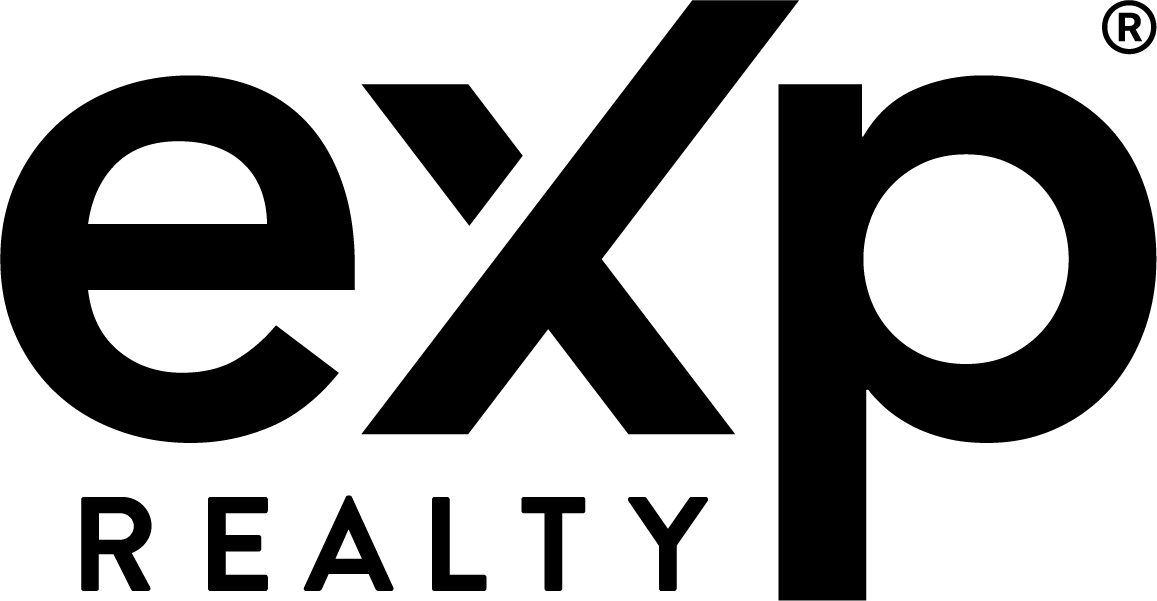Round Rock TX REVEALED | The Best and The Worst of This Growing Austin Suburb
If you're considering moving to Round Rock, TX, you're probably weighing affordability, schools, commute times, and what everyday life actually feels like. We created this guide to walk you through the honest truth—what we love about Round Rock, what catches newcomers by surprise, and how to decide if this suburb is the right fit for your family. This article draws on our experience as local agents (Austin Suburbs | Alisha & Matthew Wilson) and breaks down the practical details every relocation buyer should know.
Table of Contents
- Introduction to Round Rock, TX: Overview of the suburb
- Pro # 1: Round Rock Housing Affordability
- Pro # 2: Best Outdoor Activities & Parks in Round Rock
- Pro # 3: Round Rock ISD Schools & Education Options
- Pro # 4: Healthcare in Round Rock
- Pro # 5: Round Rock Shopping, Dining & Entertainment
- Pro # 6: Jobs in Round Rock, TX & Economic Growth Near Austin
- Pro # 7: Safety and Community Living in Round Rock
- Con # 1: High Property Taxes in Round Rock, TX
- Con # 2: Round Rock Traffic & Austin Commute Times
- Con # 3: Rapid Population Growth & Strained City Services
- Con # 4: Limited Public Transportation in Round Rock
- Con # 5: Suburban Sprawl & Car Dependency in Round Rock, TX
- Con # 6: Rising Cost of Living in Round Rock
- Con # 7: Ongoing Development and New Construction in Round Rock
- Making the Decision: Is Round Rock Right for You?
- How We Help People Moving to Round Rock, TX
- FAQs About Moving to Round Rock, TX
- Final Thoughts
Introduction to Round Rock, TX: Overview of the suburb
Round Rock has exploded in population and profile over the last few years. From being known primarily for Dell’s headquarters and a legendary donut shop, it’s now a full-fledged city with new highrises, major mixed-use developments, and thousands of new residents moving in every year. The population jumped by more than 17,000 residents since 2021, reaching an estimated 140,500 in 2025. If you're thinking about moving to Round Rock, TX, that growth is one of the first facts to understand because it drives both opportunity and growing pains.
Why is Round Rock suddenly such a hot relocation target? The primary driver is affordability relative to Austin proper. We'll unpack that and other pros below, but we’ll also be candid about the trade-offs—property taxes, traffic, and the daily realities of suburban life. Whether you're buying new construction or an established home, this guide will help you make an informed move.
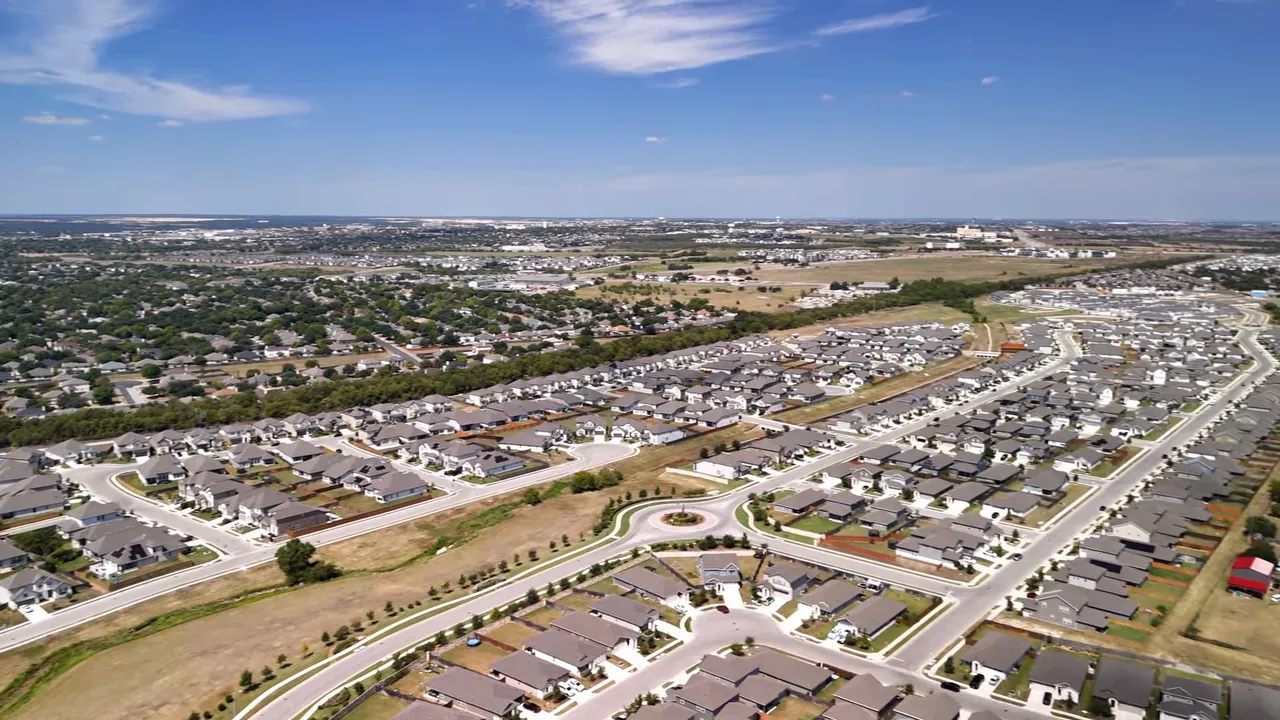
VIEW HOMES FOR SALE IN ROUND ROCK, TX
Pro # 1: Round Rock Housing Affordability
One of the most compelling reasons people choose Round Rock when moving to Round Rock, TX is cost. The median single-family home in Round Rock sits around $434,000 compared to Austin's $655,000. For new construction, the median in Round Rock is about $466,000 versus $830,000 in Austin. That gap changes the calculus for many relocation buyers: you can either stretch for less house in Austin or move slightly north and get far more square footage, a yard, and often a community amenity package for the same price.
New construction models are particularly attractive to families who want modern layouts, energy efficiency, and built-in community amenities. But a quick word of caution: model home reps work for the builder. If you're pursuing new construction when moving to Round Rock, TX, consider having an agent who represents you—someone who understands builder incentives and can negotiate upgrades, closing costs, and price concessions on your behalf. We always recommend speaking to a buyer’s agent before stepping into a model home so you know who’s looking out for your best interest.
Pro # 2: Best Outdoor Activities & Parks in Round Rock
Round Rock isn't just subdivisions and big-box shopping—it's built for outdoor living. The city maintains 37 developed parks covering more than 2,300 acres of green space. The crown jewel is Old Settlers Park, a sprawling 670-acre facility that hosts sports tournaments, concerts, and major community events. It’s expanding with new fields and event spaces under construction, which makes it one of the most robust municipal parks in the region.
Beyond traditional parks, the area includes unique attractions like Kalahari Resorts' massive indoor waterpark, the Play for All Abilities Park designed for inclusive play, and the Shayla Dame Skate Park for local skaters. More than 20 miles of hike and bike trails connect neighborhoods across the city, making it easy to spend evenings and weekends outdoors without a long drive. If your lifestyle leans toward active weekends and backyard barbecues, Round Rock shines.
Pro # 3: Round Rock ISD Schools & Education Options
Education is a top priority for many families moving to Round Rock, TX, and Round Rock Independent School District (RRISD) is a major reason why. RRISD serves nearly 47,000 students across 58 campuses and consistently earns high marks. In 2024-25 the district received a B rating from the Texas Education Agency, and Niche ranks it with an overall A grade—placing it among the top districts in Texas.
Several campuses stand out: Canyon Vista Middle School and Cactus Ranch Elementary often top performance lists, while schools like Elsa England and Patsy Sommer (note: check local listings for exact school zoning) consistently receive strong reviews. On average, Round Rock ISD outperforms state averages in reading and math—an important statistic for parents who prioritize academic performance when moving to Round Rock, TX.
Pro # 4: Healthcare in Round Rock
Quality healthcare is another core advantage. Round Rock now serves as a medical hub for central Texas with three major hospitals: Baylor Scott & White, St. David’s Round Rock, and Ascension Seton Williamson. Baylor Scott & White expanded in 2025 with a new patient tower and upgraded facilities, increasing capacity and access to modern equipment. St. David’s operates as a level-two trauma center and Ascension Seton provides 24/7 emergency and specialty services.
Specialty clinics are spread throughout the city, so most residents don’t have to drive into Austin for urgent care or specialty visits. For families and older adults alike, having robust healthcare options close to home is a major quality-of-life factor when moving to Round Rock, TX.
Pro # 5: Round Rock Shopping, Dining & Entertainment
Round Rock offers more shopping and dining options than many suburbs its size. The Round Rock Premium Outlets draw shoppers from across central Texas with designer outlets and well-known brands. Everyday retail clusters like La Frontera and University Oaks provide groceries, big-box stores, and household needs. And downtown Round Rock is being revitalized into a walkable dining and entertainment district with coffee shops, local restaurants, and events.
Local spots like Mi Mundo Roastery and Sushi Nini bring local flavor, and the legendary Round Rock Donuts remains a must-visit—the line is basically part of the experience. From boutique eateries to national retailers, you will rarely need to leave town for shopping or dining, which is a real perk for buyers moving to Round Rock, TX.
Pro # 6: Jobs in Round Rock, TX & Economic Growth Near Austin
Round Rock has evolved into an employment center as well. It’s home to the Dell Technologies global headquarters, one of the area’s largest employers. The local economy is strengthening with large projects like The District—a $525 million mixed-use development expected to create about 5,000 jobs across office, retail, and hospitality. These projects are pushing the city toward vertical development, with buildings up to 15 stories and expanded office capacity.
That growth means more opportunities for local employment, shorter commutes for those who work in town, and a diversified tax base that supports community services. For many relocation buyers, the presence of corporate employers and new job centers is a big draw when moving to Round Rock, TX.
Pro # 7: Safety and Community Living in Round Rock
Round Rock consistently ranks as one of the safest cities in Central Texas. Safety helps community life thrive: people show up for events, families feel comfortable walking downtown during evening events, and streets host weekly and seasonal programming. Music on Main, the Round Rock Arts Fest (formerly Chalkwalk), Dia de los Muertos celebrations, movies in the park, Market Days, and Round Rock Express baseball games at Dell Diamond create regular chances to connect with neighbors.
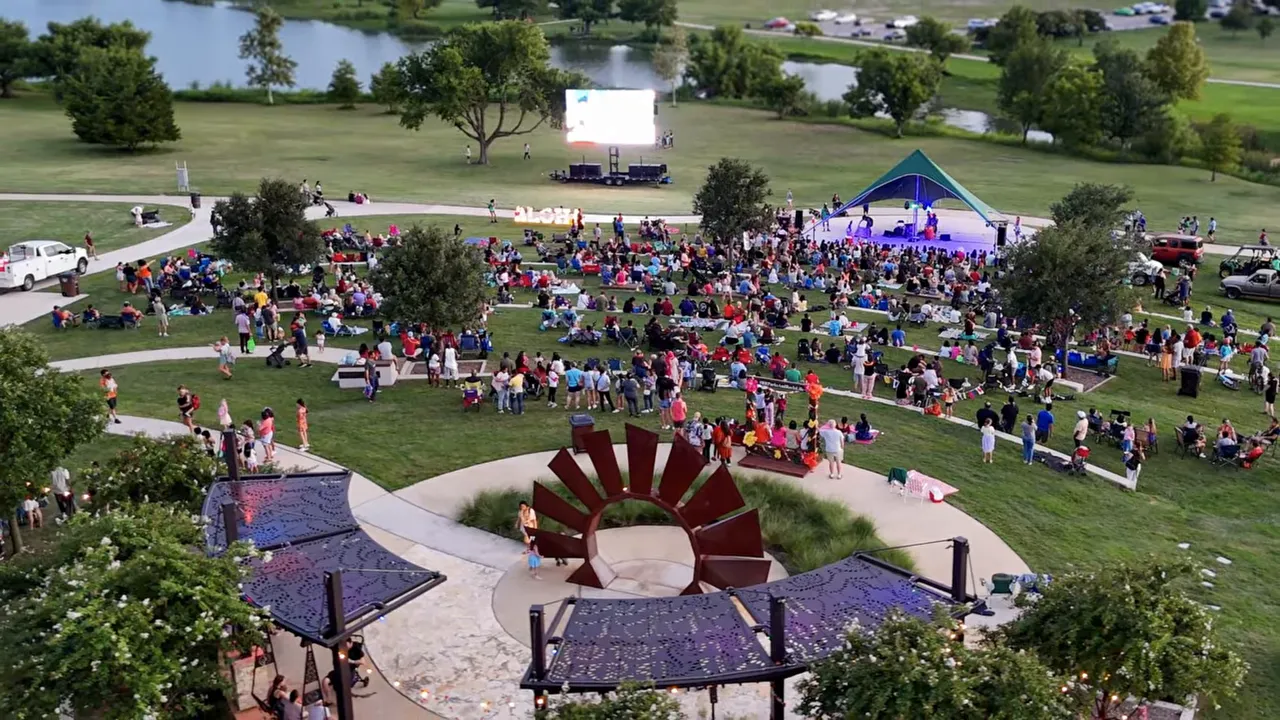
That community pulse is a core part of Round Rock’s appeal and is often cited by people moving to Round Rock, TX as a key reason they made the switch from a larger city or another suburb.
Con # 1: High Property Taxes in Round Rock, TX
Now for some hard truths. Property taxes in Round Rock are one of the biggest day-to-day financial impacts. The city's effective property tax rate is around 1.8%, which is higher than the U.S. average of 1.1% (though still lower than some neighboring Austin suburbs). On a median-priced single-family home of $434,000 with a homestead exemption, that’s roughly $6,000 a year. For new construction priced around $488,000 with the exemption, annual taxes can approach $7,000.
Texas has no state income tax, but the state makes up for it through property tax revenue. If you're moving to Round Rock, TX, expect property tax to be a notable line item in your monthly budget. It’s the “hidden” side of affordability many relocation buyers don’t realize until they get their first bill.
Con # 2: Round Rock Traffic & Austin Commute Times
Round Rock sits about 18 miles north of downtown Austin. That sounds manageable—until you factor in I-35. A typical 30-minute drive can easily stretch to an hour or more during rush hour. Stop-and-go traffic is common, and even short trips around town can be slower than you expect during peak hours.
Alternatives like State Highway 45 and tollway 130 exist, but they don’t eliminate congestion and often involve tolls. Public transit is limited—Capital Metro runs a commuter bus but service is sparse by big-city standards. For most households moving to Round Rock, TX, a car is essential. If you’ve previously relied heavily on transit or walkability, this is one of the biggest lifestyle adjustments you’ll face.
Con # 3: Rapid Population Growth & Strained City Services
Rapid growth brings clear benefits—new services, more jobs, and expanded amenities—but it also creates pressure on schools, roads, and municipal services. Schools are seeing larger enrollments, which can push class sizes higher. Roads built for a much smaller population now handle heavy daily traffic. The city is investing in infrastructure but residents feel the strain in real time.
If you're moving to Round Rock, TX, recognize that the landscape is changing fast. That might mean temporary inconveniences: construction detours, crowded parks, and longer waits for permitting or municipal services. For many people the trade-offs are worth it, but it’s important to have realistic expectations.
Con # 4: Limited Public Transportation in Round Rock
If you’re relocating from a city with robust transit, Round Rock can feel like a throwback. Capital Metro offers a commuter bus into Austin, but routes and frequency are limited. The city’s local transit program operates on reservation and restrictive hours, making it impractical for many daily commutes.
No light rail, no rapid bus network, and limited evening service means most residents rely on cars. For younger buyers or anyone prioritizing walkable, transit-oriented lifestyles, moving to Round Rock, TX might feel like a downgrade in mobility options.
Con # 5: Suburban Sprawl & Car Dependency in Round Rock, TX
Round Rock has expanded outward more than upward. Neighborhoods are spread out, daily errands often require a car, and walkability is generally limited outside of downtown. New communities sometimes push back by building internal trail systems, pools, and pocket parks, but the dominant lifestyle remains car-centric.
Even a quick trip to the grocery store or coffee shop frequently requires a short drive. If you’re used to living in a dense, walkable neighborhood, moving to Round Rock, TX will involve an adjustment to a more automobile-dependent lifestyle.
Con # 6: Rising Cost of Living in Round Rock
Round Rock is still generally cheaper than Austin, but the affordability gap is closing quickly. Median new construction costs have climbed from about $349,000 in September 2019 to roughly $488,000 today—an increase near $140,000 in six years. That appreciation means homeowners who bought earlier have seen strong returns, but newcomers are paying more than previous buyers did.
And it's not just housing. Groceries, dining, utilities, and services have all trended upward, and when you combine that with property taxes, monthly carrying costs can be higher than many expect. If you're moving to Round Rock, TX hoping for bargain-level cost of living, understand that prices have risen sharply and the day-to-day expense picture is tightening for long-time residents and newcomers alike.
Con # 7: Ongoing Development and New Construction in Round Rock
Finally, construction is nearly ubiquitous. From road projects to subdivisions to mixed-use towers, the sound and sight of development is part of daily life. That growth is critical for long-term community infrastructure, but it also brings short-term disruption: detours, noise, and shifting traffic patterns.
For some residents the continual development feels exciting—signifying progress and opportunity. For others, it’s a weekly headache. If you’re moving to Round Rock, TX, plan on living in a city that’s actively changing, and factor in patience for temporary inconveniences.

Making the Decision: Is Round Rock Right for You?
So how do you weigh the pros and cons? If affordability, strong schools, nearby jobs, and access to healthcare and recreation are your top priorities, Round Rock offers a compelling package. If minimal commute times, low property taxes, or robust public transit are non-negotiable, this suburb might not be the perfect match.
Here’s a quick checklist to help you decide:
- Priority: More house for your money — Round Rock is likely a win.
- Priority: Top-rated schools in a suburban setting — Round Rock is a strong contender.
- Priority: Short, stress-free commute to downtown Austin — Consider locations closer to the city or with access to better transit.
- Priority: Low property taxes — Expect to pay more than the national average.
- Priority: Walkable, transit-rich lifestyle — Round Rock currently favors car-dependent living.
VIEW HOMES FOR SALE IN ROUND ROCK, TX
How We Help People Moving to Round Rock, TX
When people ask us about moving to Round Rock, TX, we listen first and then provide tailored advice. New construction buyers need someone who knows how to negotiate builder contracts; relocation buyers need a neighborhood match; families need school and commute assessments. Our approach is to make your move as seamless and informed as possible—whether your timeline is ten days or ten months.
We recommend the following practical steps if you’re seriously considering moving to Round Rock, TX:
- Define your non-negotiables: schools, commute time, yard size, monthly budget.
- Get pre-approved for a mortgage to understand your buying power.
- Visit multiple neighborhoods at different times of day to check traffic and noise levels.
- Talk to our team before visiting model homes; builder reps work for the builder, not you.
- Request local school performance and boundary maps for any house you consider.
FAQs About Moving to Round Rock, TX
Is Round Rock more affordable than Austin?
Yes, generally. Median home prices in Round Rock are lower than Austin, especially for new construction. That said, prices have risen quickly in recent years, and carrying costs like property taxes can reduce some of the affordability advantage.
How bad is traffic if I commute to Austin?
Traffic can be heavy during peak times on I-35 and other major routes. What seems like a 30-minute commute off-peak can often become an hour or more in rush hour. Consider toll routes and work-start flexibility if a steady commute to downtown Austin is required.
Are the schools good in Round Rock?
Round Rock ISD is highly regarded. The district outperforms state averages in reading and math and includes several standout campuses. However, increasing enrollment can cause crowding in certain zones, so check current capacity and boundary maps when home shopping.
Will I need a car if I move to Round Rock?
Yes. Round Rock is predominantly car-dependent. Public transit options are limited compared to Austin. If you value walkability and transit alternatives, consider neighborhoods closer to Austin or those with strong internal walkability within Round Rock.
What about property taxes?
Property taxes are higher than the national average—around an effective rate of 1.8%. On median homes this can translate to several thousand dollars a year, so include taxes in your affordability calculations.
Is Round Rock family-friendly?
Very much so. Parks, school options, family-oriented downtown events, and community safety contribute to a family-friendly atmosphere. The city’s investment in recreation and healthcare also supports family life.
How quickly is Round Rock growing?
Very quickly. The city has added tens of thousands of residents in the past few years, and growth continues with major developments and job centers expanding locally. Growth brings amenities but also growing pains.
How can I get help choosing the right neighborhood?
Start with a clear list of priorities (budget, schools, commute, amenities) and consult a local agent who knows the market. If you’re moving to Round Rock, TX, we can provide neighborhood comparisons, school data, and route testing at different times of day to help you choose wisely.
Final Thoughts
Round Rock is a thriving, evolving city—one that blends suburban comfort with growing urban amenities. It offers more house for your money than Austin, strong schools, robust healthcare, and an improving downtown experience. But like any fast-growing suburb, it has trade-offs: higher property taxes, commuter traffic, limited public transit, and ongoing construction.
If you're moving to Round Rock, TX, go in with clear priorities and realistic expectations. Do your homework on property taxes and commute routes, visit at different times, and talk to a buyer’s agent before you tour model homes so you have an advocate on your side.
We’ve helped many families relocate and would be glad to help you, too. Whether you’re focused on affordability, schools, or lifestyle, the right preparation makes all the difference when moving to Round Rock, TX.
Alisha & Matthew Wilson
With years of experience in both residential and investment properties, they are dedicated to helping clients navigate Austin’s thriving market.
LIVING IN Austin TX
Specializing in relocation and real estate investment, they provide expert advice and guidance to help you find your dream home or investment property in the vibrant Austin market. Tune in for helpful tips, neighborhood tours, and insights on living in Austin.



